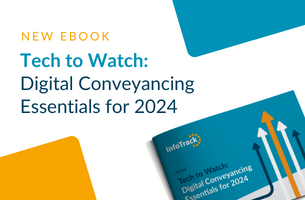
Sako: Benefits from legal technology are not evenly distributed
The past year has seen a “step change” in the adoption of legal technology and innovation, in part as a result of Covid-19, a major piece of new research has found.
However, significant barriers remain, particularly for legal services providers targeting individual consumers and small businesses (what the research called ‘PeopleLaw’ firms).
The 153-page report from Oxford University was commissioned by the Solicitors Regulation Authority (SRA) and said legal services providers saw technology and innovation as a way to improve the quality and efficiency of service delivery, and to satisfy unmet legal needs.
Changes in the last 12 months have been extensive, with over half (55%) of 891 law firms surveyed having improved or increased their use of existing technology, while 48% made changes in ways to deliver services, and 35% introduced new technology.
The report said the impact of the pandemic use has been “extensive”, with 51% of firms increasing the use of technology ‘to manage or process work’, 48% to interact with clients, and 26% to attract new clients.
Innovation and technology adoption were related, “but do not necessarily occur at the same time” – two-thirds of respondents launching new services also introduced new technology, “but there are evidently other ways to develop new services that do not necessarily require novel technology”.
Researchers said: “A good example of the latter is to offer integrated solutions for customers by combining legal and non-legal services.”
In all, 37% of respondents said they were currently using legal technology, as opposed to more generic IT, with a further 24% planning to in the future.
The top five most prevalent types of technologies currently in use were videoconferencing with clients (87% of total respondents), storing data in the cloud (66%), practice management software (62%), legal research software (50%) and e-verification/e-signature (37%).
The technology types for which planned use exceeded current use focused on client self-service: online portals for matter status updates (21% planning to use v 15% currently using), interactive websites to generate legal documents (20% v 10%) and chatbots or virtual assistants (14% v 6%).
PeopleLaw firms were less innovative, less likely to adopt legal technology, and faced higher financial, staffing, and regulatory uncertainties or barriers to technology adoption than what the research called ‘BigLaw’ firms targeting commercial clients.
Conveyancing practices were more likely to be using technology to help them deliver services (71%) with firms working in areas like employment (54%) and family law (53%) less likely.
Similar proportions (58%) were using technology in litigation, commercial work for small businesses, and wills, trusts and probate. Most of the firms with large corporate clients (71%) were using legal technology and another 22% were planning on doing so.
ABSs – the majority of which were PeopleLaw practices – were significantly more innovative and more likely to adopt legal technology than non-ABSs: 31% of ABSs launched new services in the last year, compared to 13% of non-ABSs, while 53% introduced new technology, compared to 33% of non-ABSs.
This was even though 97% of private investment in UK lawtech start-ups over the past decade went into BigLaw ventures – despite the fact that nearly half of them targeted PeopleLaw.
The research also revealed that just 1-2% of job adverts for lawyers in recent years required lawtech skills, compared to up to 15% of other legal sector jobs – 900,000 posted between 2014 and 2020 were analysed. Jobs requiring lawtech skills commanded higher salaries.
Barriers to adopting legal technology and barriers to innovation differed. For those adopting or planning to adopt technology, the most significant barriers were a lack of capital, a lack of staff expertise, and regulatory uncertainty.
For the non-adopters, lack of capital was also the main issue. The top reasons for not innovating were uncertainty about the expected business benefits, not being a strategic priority and ‘it isn’t needed at my firm’.
The research suggested that for firms serving individuals, future innovations were most likely to be linked to generic technology or products.
It added: “One surprising inhibitor of legal technology adoption originated with legal technology providers themselves.
“Several interviewees complained that existing vendors made it difficult for firms to roll out new solutions, because vendors failed to provide API access or undertake the necessary development work that would allow different technologies to work together.”
Regulatory barriers included client confidentiality and data protection requirements, and professional indemnity insurance.
“There is, therefore, a role for regulators and policy makers to promote innovation and legal technology adoption,” the report said.
“Among the policy implications of our study are the need to enhance trust in the use of legal technology by various means, clarifying the coverage of technology risks in professional indemnity insurance, and facilitating regulatory compliance in data protection requirements.”
The unregulated sector was growing at three times the pace of the regulated sector, to judge by the job postings data. “This evidence… implies that better access to lawtech skills in the non-SRA sector is due to faster employment growth in the latter.”
ABSs have “labour market characteristics associated with innovativeness and technology adoption”, employing more non-lawyers relative to lawyers, advertising a greater proportion of non-lawyer job postings with lawtech skills, and paying a higher premium for lawtech skills for non-lawyers, but not for lawyers.
The evidence showed the need “to build greater user trust in legal services and in legal technology”, the report said, which it said could be done by a register of providers of unregulated services and technology or greater use of sandboxes.
It would also be “useful to explore how to instil the same knowledge of the constitutional and ethical norms required to use AI and data for lawyers and non-lawyers working in the legal sector”.
The research found that legal technology was “very unlikely” on its own to solve all issues of unmet legal need alone.
“Many of the firms in the research – both in interviews and surveys – reported that offering services through online technology, for example apps, chatbots, or interactive online forms, not only improved access for the public but also delivered them direct business benefits.”
Other priorities identified by the report were greater support and co-ordination among government, regulators and tech developers – especially in terms of encouraging innovation and identifying funding paths – and increasing the technological and innovation skills and knowledge bases within the sector.
SRA chair Anna Bradley said: “These findings drive home the fact that when we talk about technology, we need to remember just how broad that term is and how far there is for some to travel.
“This is not just about artificial intelligence, virtual reality or future technologies. Some of the innovation which has the greatest potential to improve access to justice at pace is already available… The challenge now is how we all work together to enable this to happen.’
Mari Sako, professor of management studies at Oxford University of Oxford and project leader for this research, added: “Benefits from legal technology are not evenly distributed across different market segments.
“Regulators, including the SRA, collaborating with other stakeholders could play a major role, not only to lower regulatory uncertainty but also to level the playing field across the market segments.”















Leave a Comment